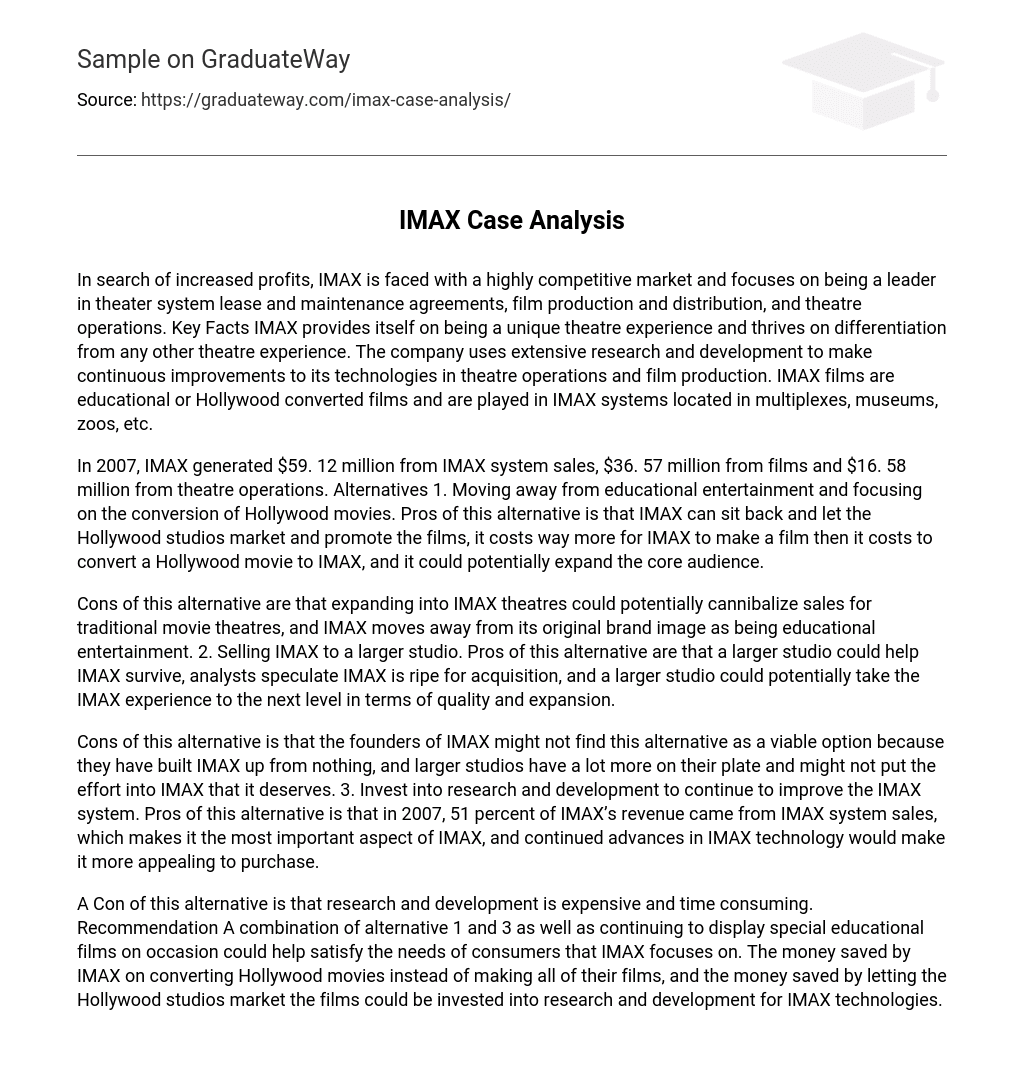In search of higher profits, IMAX faces stiff competition and aims to be a leader in theater system lease and maintenance agreements, film production and distribution, and theater operations. Key Facts: IMAX prides itself on offering a distinct theater experience and thrives on distinguishing itself from other theaters. The company is dedicated to extensive research and development to continuously improve its technologies in theater operations and film production. IMAX screens educational or converted Hollywood films in its systems found in multiplexes, museums, zoos, and more.
In 2007, IMAX made $59.12 million from IMAX system sales, $36.57 million from films, and $16.58 million from theatre operations. One alternative option is to shift away from educational entertainment and instead prioritize the conversion of Hollywood movies. The advantages of this alternative include allowing IMAX to rely on Hollywood studios to market and promote the films, as well as the lower cost of converting a Hollywood movie to IMAX compared to producing a new film. Additionally, this strategy could potentially help expand IMAX’s core audience.
Potential drawbacks of this alternative include the possibility that expanding into IMAX theatres may harm sales for regular movie theatres, and it may cause IMAX to deviate from its original brand image as a provider of educational entertainment. Another option is to sell IMAX to a bigger studio, which could benefit the company by ensuring its survival. Analysts believe that IMAX is currently in a desirable position for acquisition. Furthermore, a larger studio has the potential to enhance the quality and scope of the IMAX experience.
The founders of IMAX may not consider this alternative viable because they have built IMAX from scratch, whereas larger studios may not prioritize IMAX and give it the attention it deserves. Another alternative is to invest in research and development to enhance the IMAX system. This option is beneficial as, in 2007, 51 percent of IMAX’s revenue came from IMAX system sales, making it the most crucial aspect of IMAX. Further advancements in IMAX technology would make it more attractive for potential buyers.
The downside of this option is the high cost and time required for research and development. It is recommended to combine alternative 1 and 3, while also occasionally showing special educational films, to meet the consumer needs that IMAX targets. The funds saved from converting Hollywood movies and allowing the studios to market the films can be invested in IMAX technology research and development.





